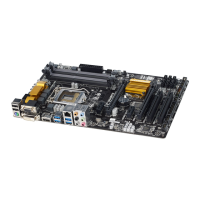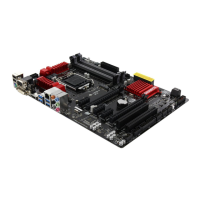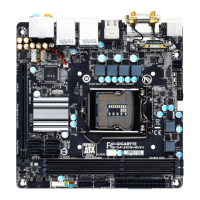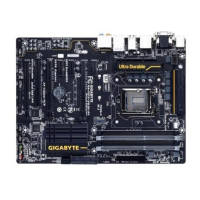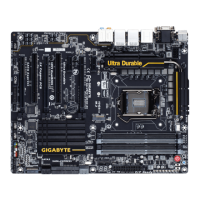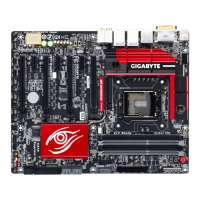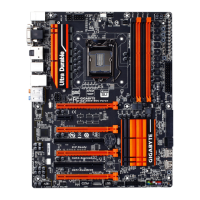Do you have a question about the Gigabyte GA-Z97P-D3 and is the answer not in the manual?
Essential safety and handling guidelines before installing hardware.
Detailed technical specifications for CPU, memory, storage, and expansion slots.
Step-by-step guide and precautions for installing the CPU.
Instructions and tips for installing DDR3 memory modules.
How to enter the BIOS Setup utility and general overview.
Introduction to the Memory Intelligent Tweaker (M.I.T.) section of BIOS.
Displays current CPU/memory frequencies and parameters.
Settings for CPU frequency, clock ratios, and multipliers.
Advanced CPU features like Turbo Boost, EIST, and core control.
Options for memory frequency, timings, and profiles (XMP).
System voltage display, temperature monitoring, and fan speed reporting.
Settings for CPU and system fan speed control and PCIe slot modes.
Settings for system power states, wake-up events, and AC power loss recovery.
Options for powering on the system via keyboard/mouse and ASPM control.
Guide for setting up SATA drives, including RAID configurations.
| Non-ECC | Yes |
|---|---|
| Memory channels | Dual-channel |
| Memory slots type | DIMM |
| Number of memory slots | 4 |
| Supported memory types | DDR3-SDRAM |
| Maximum internal memory | 32 GB |
| Supported memory clock speeds | 1333, 1600, 1800, 1866, 2000, 2133, 2200, 2400, 2600, 2666, 2800, 2933, 3000 MHz |
| Processor socket | LGA 1150 (Socket H3) |
| Processor manufacturer | Intel |
| Compatible processor series | Intel Celeron, Intel Pentium |
| USB 2.0 connectors | 3 |
| Number of SATA connectors | 6 |
| Number of SATA II connectors | 0 |
| USB 3.2 Gen 1 (3.1 Gen 1) connectors | 1 |
| RAID levels | 0, 1, 5, 10 |
| Supported storage drive interfaces | SATA III |
| HDMI version | 1.4a |
| USB 2.0 ports quantity | USB 2.0 ports have a data transmission speed of 480 Mbps, and are backwards compatible with USB 1.1 ports. You can connect all kinds of peripheral devices to them. |
| USB 3.2 Gen 1 (3.1 Gen 1) Type-A ports quantity | 2 |
| Ethernet interface type | Gigabit Ethernet |
| Component for | PC |
| Motherboard chipset | Intel® Z97 |
| Audio output channels | 7.1 channels |
| Motherboard form factor | ATX |
| Maximum resolution | 4096 x 2160 pixels |
| Maximum graphics card memory | 1000 MB |
| Parallel processing technology support | 2-Way CrossFireX |
| BIOS type | UEFI AMI |
| ACPI version | 5.0 |
| BIOS memory size | 128 Mbit |
| Depth | 200 mm |
|---|---|
| Width | 305 mm |
